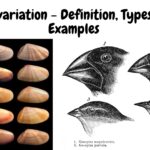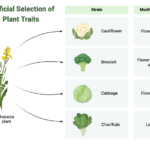AS and A Level Biology 24 Views 1 Answers
Sourav PanLv 9November 1, 2024
Describe the role of gibberellin in the germination of barley
Describe the role of gibberellin in the germination of barley
Please login to save the post
Please login to submit an answer.
Sourav PanLv 9May 15, 2025
The Role of Gibberellin in the Germination of Barley
Gibberellin (GA) plays a pivotal role in the germination of barley seeds, influencing various stages from water imbibition to seedling growth. Its primary functions can be summarized as follows:
Key Stages of Barley Germination Influenced by Gibberellin:
- Water Imbibition Stage:
- Enhanced Enzyme Synthesis: GA promotes the synthesis of enzymes (e.g., alpha-amylase) in the aleurone layer, crucial for breaking down food reserves.
- Radicle Emergence:
- Cell Division and Elongation: GA stimulates cell division and elongation in the radicle, facilitating its growth through the seed coat.
- Shoot Development:
- Stem Growth and Leaf Development: GA stimulates both, ensuring the seedling’s survival above ground.
- Starch Degradation:
- Alpha-amylase Induction: One of GA’s most significant actions is inducing alpha-amylase, which breaks down stored starch into glucose, providing energy for germination.
- Seedling Growth:
- Rapid Stem and Leaf Growth: GA influences rapid growth, enabling the seedling to initiate photosynthesis promptly.
Mechanism and Interactions:
- Hormonal Antagonism: GA’s action is antagonized by Abscisic Acid (ABA), which suppresses the expression of GA-induced genes (e.g., those encoding α-amylases and proteases) in the aleurone layer. An ABA-induced protein kinase, PKABA1, mediates this suppression.
- Signal Transduction: GA is secreted by the embryo to the aleurone layer, where it triggers a signaling cascade leading to the expression of hydrolytic enzymes.
Environmental Dependence:
- Adequate Water: Essential for GA-mediated processes during seed germination, highlighting the importance of suitable soil conditions for optimal germination.
Agricultural and Biological Significance:
Understanding GA’s role in barley germination provides valuable insights into plant developmental biology, with potential applications in:
- Agronomy: Optimizing seed germination conditions and hormone regulation for improved crop yields.
- Horticulture: Enhancing seedling establishment and growth in various environmental conditions.
- Plant Physiology: Further elucidating hormone interactions and signaling pathways in plant development.
0
0 likes
- Share on Facebook
- Share on Twitter
- Share on LinkedIn
0 found this helpful out of 0 votes
Helpful: 0%
Helpful: 0%
Was this page helpful?




